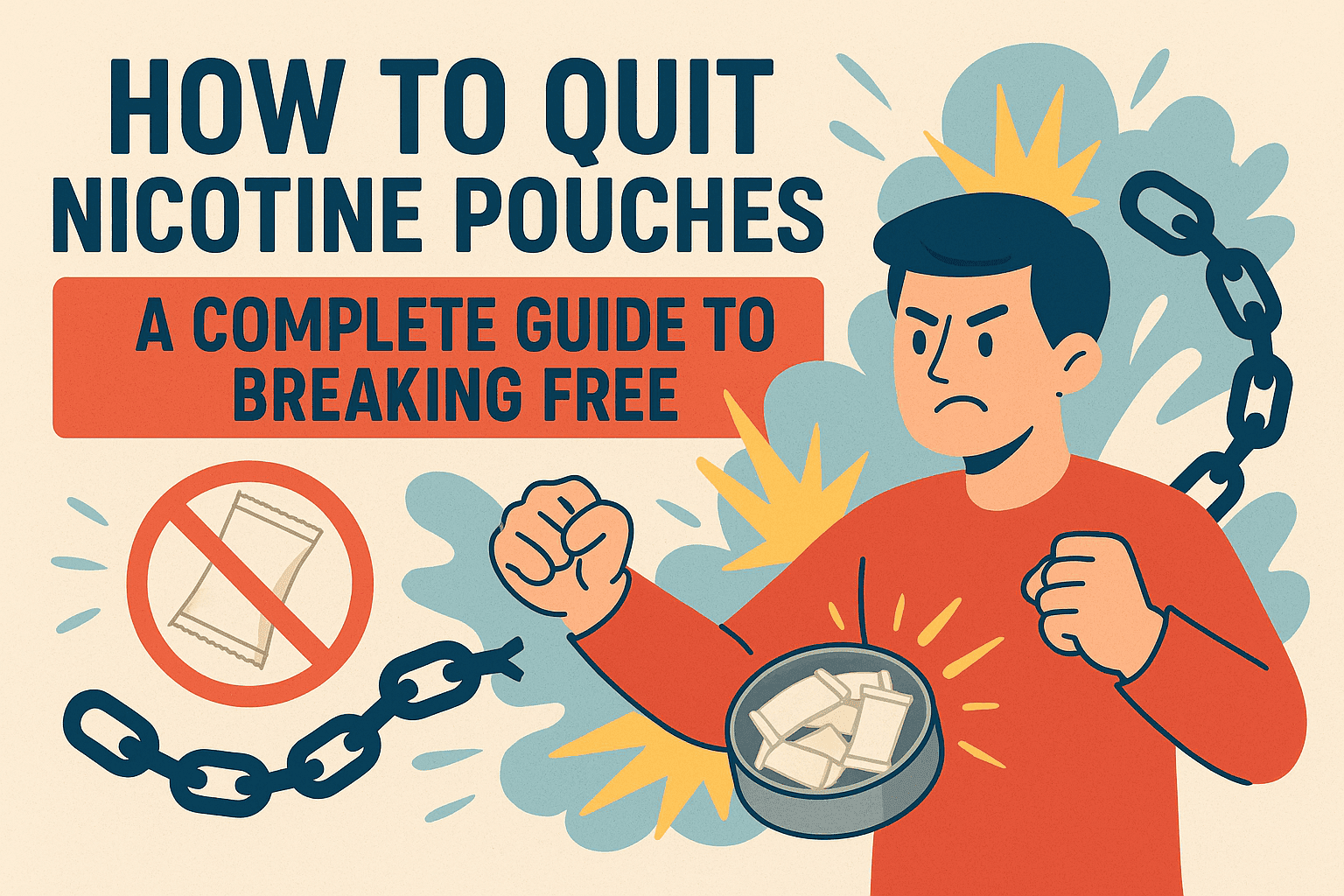
How to Quit Nicotine Pouches: A Complete Guide to Breaking Free
Nicotine pouches have become increasingly popular in recent years, offering a discreet, smokeless way to get a nicotine fix. But just like cigarettes or vapes, they can quickly become a habit that’s hard to shake.
If you’re ready to quit, you’re not alone—and you’re absolutely capable of doing it. This guide is designed to walk you through the process of quitting nicotine pouches step by step, with helpful resources, tips, and insights to support you along the way.
Why Quit Nicotine Pouches?
While marketed as a cleaner or safer alternative to smoking or chewing tobacco, nicotine pouches are still addictive. The primary ingredient—nicotine—is a stimulant that can lead to both physical and psychological dependence. Over time, regular use may contribute to:
- Increased heart rate and blood pressure
- Anxiety, irritability, and mood swings
- Sleep disturbances and fatigue
- Financial costs
- Long-term reliance on nicotine to function normally
Quitting gives you back control over your choices, your health, and your daily life.
Step 1: Understand the Nature of Nicotine Addiction
Nicotine addiction has two sides: physical dependence and behavioral habits. You may reach for a pouch during specific triggers—stress, boredom, after meals, or during work breaks.
- Start by tracking your usage for a few days. Ask yourself:
- When do I use nicotine pouches the most?
- What emotional or situational triggers are tied to my usage?
- How quickly do I crave another pouch after using one?
Helpful Resource: Understanding Nicotine Addiction – CDC
Step 2: Decide How You Want to Quit
There’s no universally perfect way to quit, but here are three evidence-based methods to consider:
Cold Turkey: This means stopping entirely, all at once. It’s tough, especially if you’ve used nicotine pouches for a long time, but it works for some people who are highly motivated and prepared for withdrawal symptoms.
Gradual Reduction: This involves tapering down slowly—reducing how many pouches you use per day or switching to lower-nicotine products over time.
Nicotine Replacement Therapy (NRT): Options like patches, gum, or lozenges offer a controlled dose of nicotine to ease withdrawal symptoms while you wean off the habit.
Helpful Resource: NHS Stop Smoking Aids Guide
Step 3: Prepare for Withdrawal
Once you stop using nicotine, your body and brain will go through a withdrawal period. You might experience:
- Cravings
- Irritability and mood swings
- Fatigue or restlessness
- Difficulty sleeping
- Trouble concentrating
Helpful Resource: Managing Nicotine Withdrawal – Smokefree.gov
Step 4: Replace the Habit
It’s not just about quitting nicotine—it’s also about replacing the behavior. Many people benefit from having alternatives ready:
- Sugar-free gum or mints
- Herbal pouches (nicotine-free)
- Chewing on toothpicks or flavored sticks
- Drinking cold water or herbal tea
- Fidget tools or stress balls
- Physical activity
Helpful Resource: Nicotine-Free Substitutes – Truth Initiative
Step 5: Build a Support System
You don’t have to do this alone. In fact, your chances of success increase with support:
- Talk to friends or family
- Join online forums or quit-smoking communities
- Use a progress-tracking app
- Talk to a therapist or coach
Helpful Resources:
BecomeAnEX Support Community
QuitNow App
Step 6: Avoid Triggers and Stay Accountable
Relapse is common, but it doesn’t mean failure. Anticipate and plan for it:
- Avoid trigger situations
- Replace old routines
- Keep a journal
- Set small goals and reward yourself
Helpful Resource: Relapse Prevention Tips – Quitline
What Happens to Your Body After You Quit?
Here’s a timeline of common benefits:
- After 24 hours: Nicotine levels drop, blood pressure normalizes
- After 72 hours: Breathing improves
- After 2–3 weeks: Cravings decrease, mood stabilizes
- After 1 year: Heart and lung health improve
- Long-term: Reduced risk of serious disease
Helpful Resource: Benefits of Quitting – Mayo Clinic
Final Thoughts: You Can Quit for Good
Breaking free from nicotine pouches isn’t easy—but it’s completely achievable. Every step you take away from nicotine is a step toward better health, more freedom, and stronger self-control.
You’ve already taken the first step by reading this guide. Now take the next one.

